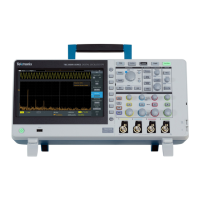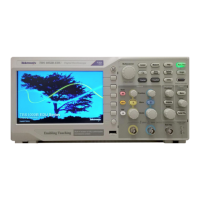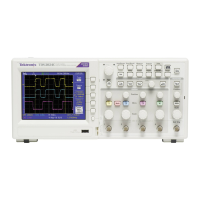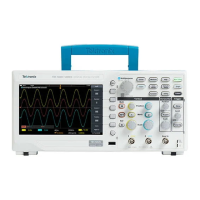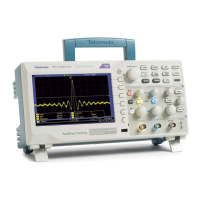*SRE
(Service Request Enable) sets or queries the bits in the Service Request Enable
Register (SRER). Refer to the Status and Events section for more information.
Group
Status and Error
Syntax
*SRE <NR1>
*SRE?
Related Commands
*CLS on page 75, DESE on page 96, *ESE on page 106, *ESR? on page 107,
EVENT? on page 115, EVMsg? on page 116, FACtory on page 119, *PSC on
page 195
Arguments
<NR1> is an integer value in the range from 0 to 255. The binary bits of the
SRER are set according to this value. Using an out-of-range value causes an
execution error. The power-on default for SRER is 0 if *PSC is 1. If *PSC is 0,
the SRER maintains its value through a power cycle.
Examples
*SRE48 sets the bits in the SRER to 00110000 binary.
*SRE? might return a value of 32, showing that the bits in the SRER have the
binary value 00100000.
S commands
TBS2000 Series Programmer 219
